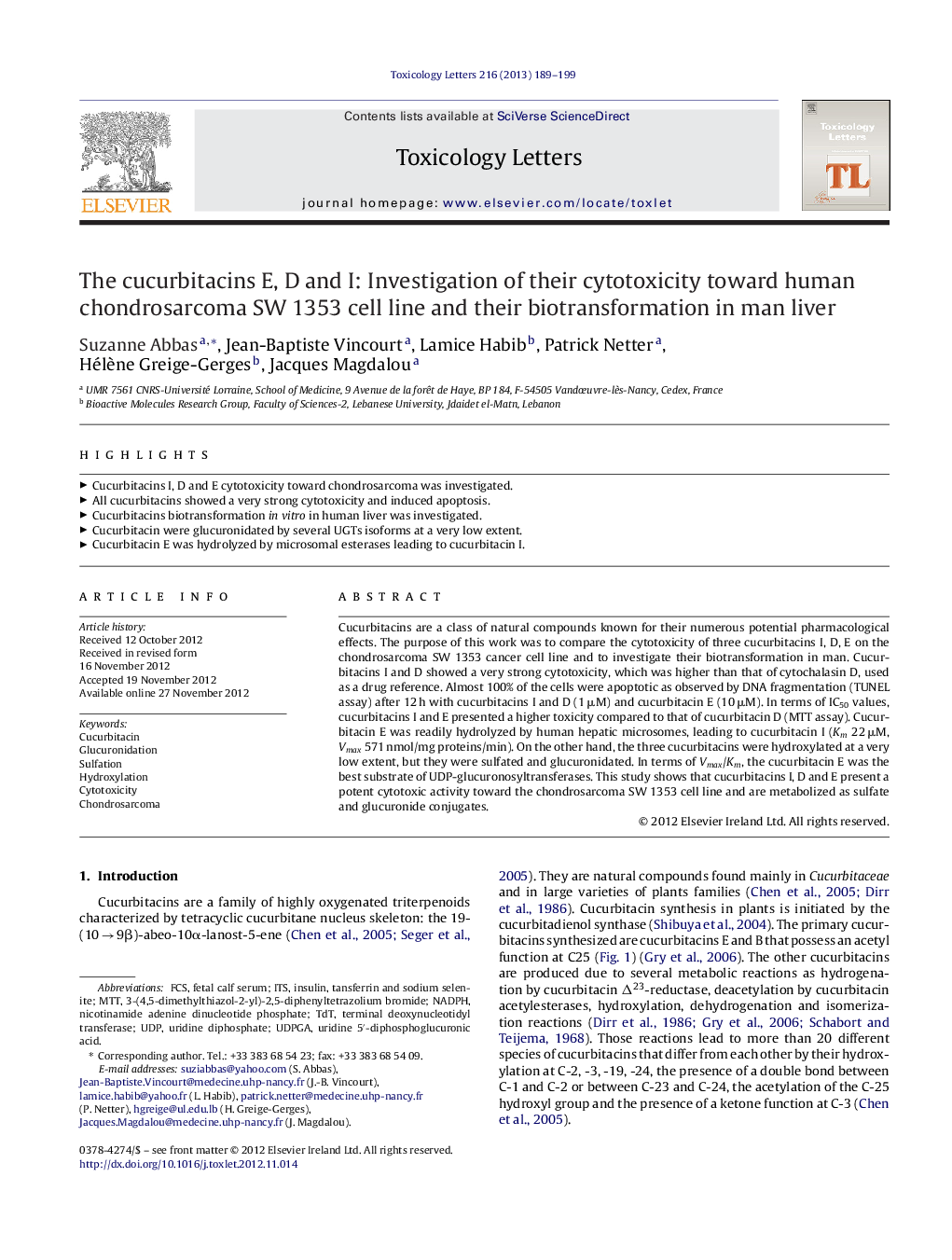| Article ID | Journal | Published Year | Pages | File Type |
|---|---|---|---|---|
| 2599468 | Toxicology Letters | 2013 | 11 Pages |
Cucurbitacins are a class of natural compounds known for their numerous potential pharmacological effects. The purpose of this work was to compare the cytotoxicity of three cucurbitacins I, D, E on the chondrosarcoma SW 1353 cancer cell line and to investigate their biotransformation in man. Cucurbitacins I and D showed a very strong cytotoxicity, which was higher than that of cytochalasin D, used as a drug reference. Almost 100% of the cells were apoptotic as observed by DNA fragmentation (TUNEL assay) after 12 h with cucurbitacins I and D (1 μM) and cucurbitacin E (10 μM). In terms of IC50 values, cucurbitacins I and E presented a higher toxicity compared to that of cucurbitacin D (MTT assay). Cucurbitacin E was readily hydrolyzed by human hepatic microsomes, leading to cucurbitacin I (Km 22 μM, Vmax 571 nmol/mg proteins/min). On the other hand, the three cucurbitacins were hydroxylated at a very low extent, but they were sulfated and glucuronidated. In terms of Vmax/Km, the cucurbitacin E was the best substrate of UDP-glucuronosyltransferases. This study shows that cucurbitacins I, D and E present a potent cytotoxic activity toward the chondrosarcoma SW 1353 cell line and are metabolized as sulfate and glucuronide conjugates.
► Cucurbitacins I, D and E cytotoxicity toward chondrosarcoma was investigated. ► All cucurbitacins showed a very strong cytotoxicity and induced apoptosis. ► Cucurbitacins biotransformation in vitro in human liver was investigated. ► Cucurbitacin were glucuronidated by several UGTs isoforms at a very low extent. ► Cucurbitacin E was hydrolyzed by microsomal esterases leading to cucurbitacin I.
